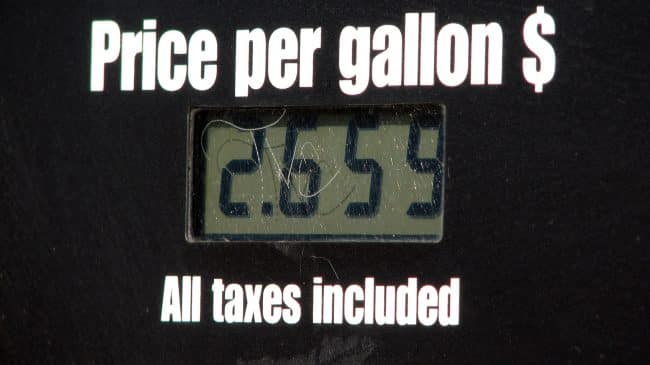Regular readers of this column for Public Works Financing know that I’m a big fan of tolls as a better highway funding source than fuel taxes. But even those who aren’t big fans of tolling should be concerned about the coming demise of fuel taxes as the primary source for funding America’s highways.
Back in 2005, I served on a special committee appointed by the Transportation Research Board (TRB). Our challenge was to examine likely future changes in vehicle propulsion and the demand for highway travel. Even then, it became clear to all 14 members that fuel taxes were not sustainable, long-term. Our report, The Fuel Tax and Alternatives for Transportation Funding, explained why we’d reached this conclusion and suggested steps toward finding a replacement. They included:
- Retain and strengthen the users-pay principle;
- Expand the use of tolls;
- Test what we now call mileage-based user fees; and,
- Find a stable source of tax funding for transit.
Our findings were reinforced several years later when the congressionally-appointed National Surface Transportation Infrastructure Financing Commission assessed a wide array of replacements and concluded that replacing per-gallon taxes with per-mile charges (mileage-based user fees—MBUFs) was the best way forward.
For the last five years or so, a growing number of state DOTs have operated pilot programs to test various ways of implementing MBUFs to replace per-gallon fuel taxes. They have learned that it’s wise to offer people several alternative ways of having their mileage reported and that it might make sense to have private firms provide the interface with vehicle operators to alleviate concerns over government monitoring people’s travel. They’ve also found that actual experience with a per-mile charging system alleviates most of the concerns people have based only on what they’ve read about the idea.
The transition from per-gallon to per-mile will be a major shift in transportation funding. So it is critically important that we think hard about the scope of this change. As I see it, there are four serious flaws with the 20th century model of paying for highways via per-gallon tax in addition to dependence on one particular mode of vehicle propulsion. The others are:
- Most fuel taxes are not indexed for inflation;
- The original users-pay/users-benefit principle has been seriously breached;
- Fuel taxes are viewed by people as taxes, not payments for highway use; and,
- Fuel tax revenues are sent to politicians, not directly to highway providers.
Ideally, we should fix these four flaws as part of the transition from per-gallon to per-mile.
Problem one is the smallest change. A growing number of US toll roads now index their toll rates to the Consumer Price Index (CPI) or some other inflation index; this has been made a lot easier thanks to all-electronic tolling. Eight states have recently indexed their fuel taxes to inflation, too, so inflation-indexing state MBUFs should not be a big deal.
Problems two and three are related, I believe. Highway users readily accepted gas taxes when they began at the state level in 1919, because they were sure that although it was called a tax, it actually operated as a pure user fee: all the revenues were deposited into a dedicated state highway fund, so the users-pay/users-benefit principle was visible and widely understood. But in the second half of the 20th century, that principle was eroded, bit by bit, as state highway departments became state transportation departments. In a large number of states, the dedicated highway fund morphed into a state transportation fund, supporting a whole array of transportation modes. Congress did the same thing with federal fuel taxes, starting in the 1970s. But the large majority (and in some cases all) of the revenue still comes from “highway user taxes.” Thus, while users-pay has been retailed, the users-benefit part of the deal has been seriously undercut.
And that, I believe, has contributed to the public perception of a “gas tax increase” as simply a tax increase, and therefore something to be resisted. House Speaker Paul Ryan (R-WI) objected vociferously to recent calls for a federal gas tax increase, right after Congress had given most Americans a tax cut. A whole array of taxpayer groups seconded that motion, and the odds of Congress enacting a federal fuel tax increase look very small.
That kind of battle does not, for the most part, occur when your cell phone company increases rates in order to add more cell towers to give you better reception. Nor does it occur when your electric company replaces an aging coal-fired power plant with a state-of-the-art gas-fired plant. A well-supported rate increase for such a project is likely to be approved by the state regulatory commission without much fuss. In these and other cases, what you pay is clearly a user fee—one that meets the users-pay/users-benefit principle. And this is true even when the supplier in question is a municipal electric, gas, or water utility. You pay utility bills, not tax bills.
Those utility cases are also different from highways in that you pay the user fees directly to the provider of the service. Here again, the same is true whether the utility is run by the local or state government or is an investor-owned company. You are charged based on how much or what category of service you use, and you pay the provider, not the government. The only case where this is true in the highway sector is toll roads (whether private or public).
My point here is that the emergence of viable methods of charging per mile also makes it feasible to de-politicize highways and re-organize them along the same lines as the other public utilities on which our economy depends. If we are going to go through the great effort it will take to change the method of paying for highways, let’s at least attempt to fix all the flaws that are now evident with today’s fuel tax model.
This column first appeared in Public Works Financing.

